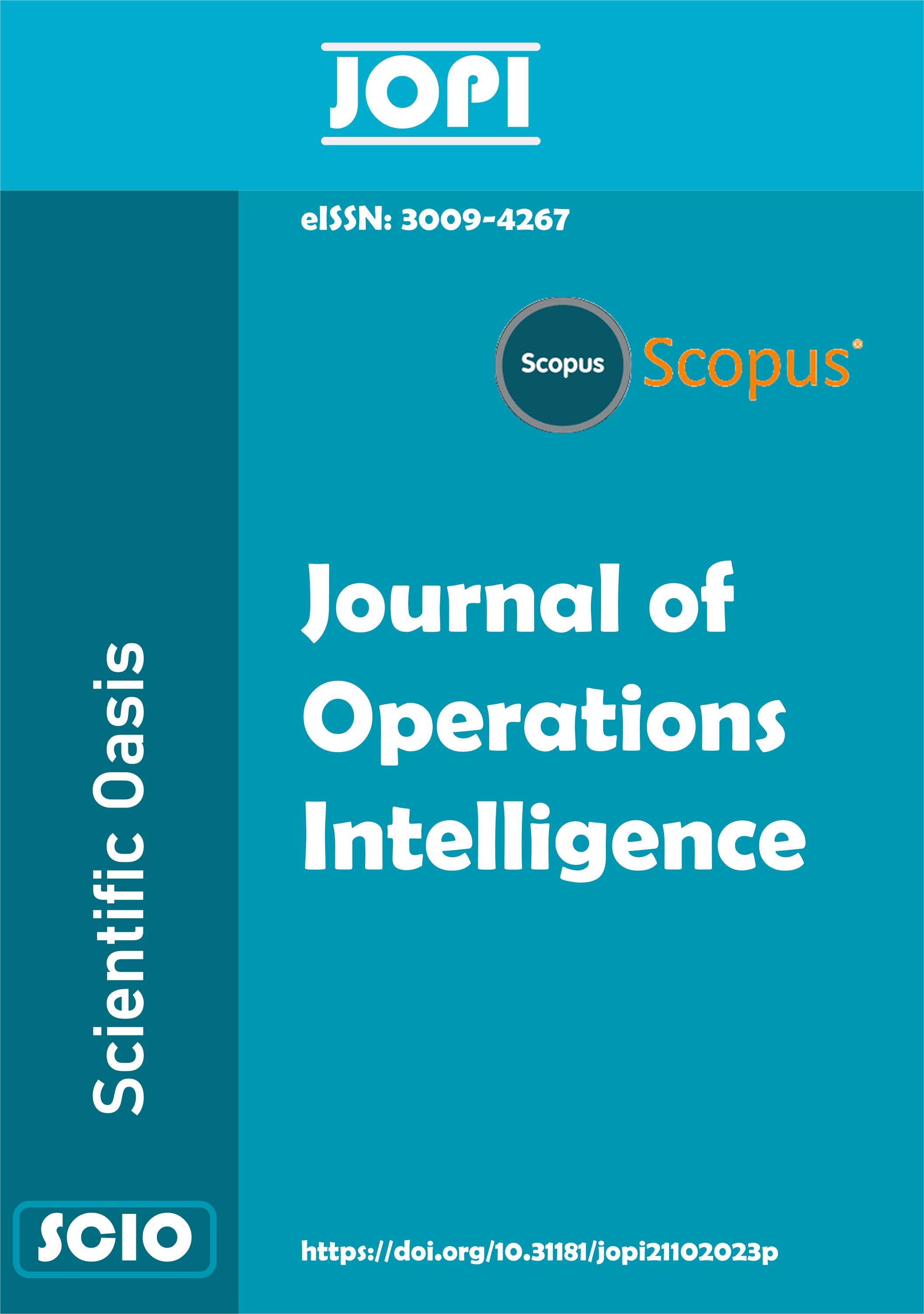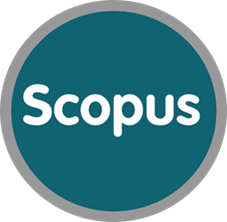Evaluation of User Costs in Terms of Public Transportation Fare: A Literature Review
DOI:
https://doi.org/10.31181/jopi21202426Keywords:
Public Transportation Fare, User Costs, In-vehicle Time, Waiting Time, Access-egress Time, Value of TimeAbstract
The welfare level differs in every geography depending on the economy. This also differentiates the variables taken into account when determining transportation fares. While underdeveloped or developing countries determine prices by focusing only on operating and investment costs, developed countries take user and environmental costs into consideration. However, the failure to describe the parameters used in determining these costs leads to the emergence of ineffective pricing policies. Especially, the concept of user cost has become the focus of human-oriented policies in recent years. To this end, the paper provides a literature-based analysis of user costs used in the calculation of public transportation fares. The fact that studies in the literature did not address user costs within a clear framework has created an important gap in this regard. The aim of this study is to fill this gap in the literature by systematically examining the user cost factor affecting transportation fares and to provide a source for other research.
Downloads
References
Pozdena, R. J., & Merewitz, L. (1978). Estimating cost functions for rail rapid transit properties. Transportation Research, 12(2), 73–78. https://doi.org/10.1016/0041-1647(78)90044-8
Wirasinghe, S. C., & Seneviratne, P. N. (1986). Rail line length in an urban transportation corridor. Transportation Science, 20(4), 237–245. https://doi.org/10.1287/trsc.20.4.237
Stone, J. R., Allen, J. D., Moerz, A., & Gardner, B. (1992). Transit system evaluation: Guideway bus vs. light rail transit. Journal of Advanced Transportation, 26(3), 213–240. https://doi.org/10.1002/atr.5670260303
Savage, I. (1997). Scale economies in United States rail transit systems. Transportation Research Part a Policy and Practice, 31(6), 459–473. https://doi.org/10.1016/s0965-8564(97)00003-7
Parajuli, P. M., & Wirasinghe, S. C. (2001). A line haul transit technology selection model. Transportation Planning and Technology, 24(4), 271–308. https://doi.org/10.1080/03081060108717671
Jha, M. K., & Oluokun, C. (2004). Optimizing station locations along transit rail lines with geographic information systems and artificial intelligence. WIT Transactions on the Built Environment, 74. https://www.witpress.com/Secure/elibrary/papers/CR04/CR04002FU.pdf
O'sullivan, A. (2007). Urban economics (pp. 225-226). McGraw-Hill/Irwin.
Jha, M. K., Schonfeld, P., & Samanta, S. (2007). Optimizing Rail Transit Routes with Genetic Algorithms and Geographic Information System. Journal of Urban Planning and Development, 133(3), 161–171. https://doi.org/10.1061/(ASCE)0733-9488(2007)133:3(161)
Martinez, M. J. (2009). Calculation of Benefits of Advanced Integrated Rail Service: Application of Intelligent Transportation Systems to the Developing City of Lima, Peru. Transportation Research Record, 2112(1), 26-33. https://doi.org/10.3141/2112-04
Verma, A., Upadhyay, D., & Goel, R. (2011). An integrated approach for optimal rail transit corridor identification and scheduling using geographical information system. Journal of King Saud University - Science, 23(3), 255–271. https://doi.org/10.1016/j.jksus.2011.02.002
Li, W., & Yin, S. (2012). Analysis on cost of urban rail transit. Journal of Transportation Systems Engineering and Information Technology, 12(2), 9–14. https://doi.org/10.1016/s1570-6672(11)60190-6
Li, Z., Lam, W. H., Wong, S., & Sumalee, A. (2012). Design of a rail transit line for profit maximization in a linear transportation corridor. Transportation Research Part E Logistics and Transportation Review, 48(1), 50–70. https://doi.org/10.1016/j.tre.2011.05.003
Tsai, F., Chien, S., & Wei, C. (2013). Joint optimization of temporal headway and differential fare for transit systems considering heterogeneous demand elasticity. Journal of Transportation Engineering, 139(1), 30–39. https://doi.org/10.1061/(asce)te.1943-5436.0000468
Xueyu, Z., & Jiaqi, Y. (2013). Research on the Bi-level Programming Model for Ticket Fare Pricing of Urban Rail Transit based on Particle Swarm Optimization Algorithm. Procedia - Social and Behavioral Sciences, 96, 633–642. https://doi.org/10.1016/j.sbspro.2013.08.074
Deng, L., Liu, K., Zhang, Z., & Lai, T. (2014). Fare Optimization for Changsha Metro Line 2. CICTP 2014: Safe, Smart, and Sustainable Multimodal Transportation Systems. https://doi.org/10.1061/9780784413623.154
Borndörfer, R., Karbstein, M., & Pfetsch, M. E. (2012). Models for fare planning in public transport. Discrete Applied Mathematics, 160(18), 2591-2605. https://doi.org/10.1007/3-540-32539-5_93
Huang, D., Liu, Z., & Hua, D. (2016). An Optimization Decision Model of Urban Public Transit Fare Structures. CICTP 2016. https://doi.org/10.1061/9780784479896.061
Parry, I. W. H., & Small, K. A. (2009). Should urban transit subsidies be reduced? American Economic Review, 99(3), 700–724. https://doi.org/10.1257/aer.99.3.700
Liu, B., Ge, Y., Cao, K., Jiang, X., Meng, L., Liu, D., & Gao, Y. (2017). Optimizing a desirable fare structure for a bus-subway corridor. PLoS ONE, 12(10), e0184815. https://doi.org/10.1371/journal.pone.0184815
Tang, C., Ceder, A., & Ge, Y. (2017). Integrated optimization of bus line fare and operational strategies using elastic demand. Journal of Advanced Transportation, 2017, 1–15. https://doi.org/10.1155/2017/7058789
Jansson J. O., Holmgren J. and Ljungberg A. (2015) Pricing public transport services, Handbook of research methods and applications in transport economics and policy, 260- 308. http://dx.doi.org/10.4337/9780857937933.00022
Kaddoura, I., Kickhöfer, B., Neumann, A., & Tirachini, A. (2015). Optimal public transport pricing: Towards an agent-based marginal social cost approach. Journal of Transport Economics and Policy (JTEP), 49(2), 200-218. https://www.jstor.org/stable/jtranseconpoli.49.2.0200
Wang, Q., & Deng, L. (2019). Integrated optimization method of operational subsidy with fare for urban rail transit. Computers & Industrial Engineering, 127, 1153–1163. https://doi.org/10.1016/j.cie.2018.05.003
Yook, D., & Heaslip, K. (2014). Determining Appropriate Fare Levels for Distance-Based Fare Structure: Considering Users’ Behaviors in a Time-Expanded Network. Transportation Research Record, 2415(1), 127-135. https://doi.org/10.3141/2415-14
Tirachini, A., Hensher, D. A., & Rose, J. M. (2014). Multimodal pricing and optimal design of urban public transport: The interplay between traffic congestion and bus crowding. Transportation Research Part B Methodological, 61, 33–54. https://doi.org/10.1016/j.trb.2014.01.003
Chin, A., Lai, A., & Chow, J. Y. J. (2016). Nonadditive Public Transit Fare Pricing Under Congestion with Policy Lessons from a Case Study in Toronto, Ontario, Canada. Transportation Research Record, 2544(1), 28–37. https://doi.org/10.3141/2544-04
Lam, W. H. K., & Zhou, J. (2000). Optimal Fare Structure for Transit Networks with Elastic Demand. Transportation Research Record Journal of the Transportation Research Board, 1733(1), 8–14. https://doi.org/10.3141/1733-02
Chien, S. I. Y., & Tsai, C. F. M. (2007). Optimization of fare structure and service frequency for maximum profitability of transit systems. Transportation Planning and Technology, 30(5), 477–500. https://doi.org/10.1080/03081060701599961
Tsai, F., Chien, S. I., & Spasovic, L. N. (2008). Optimizing Distance-Based Fares and Headway of an Intercity Transportation System with Elastic Demand and Trip Length Differentiation. Transportation Research Record Journal of the Transportation Research Board, 2089(1), 101–109. https://doi.org/10.3141/2089-13
Li, Z., Lam, W. H. K., & Wong, S. C. (2008). The Optimal Transit Fare Structure under Different Market Regimes with Uncertainty in the Network. Networks and Spatial Economics, 9(2), 191–216. https://doi.org/10.1007/s11067-007-9058-z
Zhou, J., Lam, W. H., & Heydecker, B. G. (2005). The generalized Nash equilibrium model for oligopolistic transit market with elastic demand. Transportation Research Part B Methodological, 39(6), 519–544. https://doi.org/10.1016/j.trb.2004.07.003
Neumann, M. (2007). Fare planning for public transport. In Operations Research Proceedings 2006 (pp. 61-66). Springer, Berlin, Heidelberg. https://doi.org/10.1007/978-3-540-69995-8_9
Borndörfer, R., Neumann, M., & Pfetsch, M. E. (2006). Optimal fares for public transport. In Operations Research Proceedings 2005 (pp. 591-596). Springer, Berlin, Heidelberg. https://doi.org/10.1007/3-540-32539-5_93
De Borger, B., Mayeres, I., Proost, S., & Wouters, S. (1996). Optimal pricing of urban passenger transport: a simulation exercise for Belgium. Journal of transport economics and policy, 31-54. https://www.jstor.org/stable/20053095
Deng, L., Zhang, Z., Liu, K., Zhou, W., & Ma, J. (2014). Fare Optimality Analysis of Urban Rail Transit under Various Objective Functions. Discrete Dynamics in Nature and Society, 2014, 1–8. https://doi.org/10.1155/2014/910736
Zhu, Y., Mao, B., Bai, Y., & Chen, S. (2017). A bi-level model for single-line rail timetable design with consideration of demand and capacity. Transportation Research Part C Emerging Technologies, 85, 211–233. https://doi.org/10.1016/j.trc.2017.09.002
Chen, P., & Nie, Y. (2017). Connecting e-hailing to mass transit platform: Analysis of relative spatial position. Transportation Research. Part C, Emerging Technologies, 77, 444–461. https://doi.org/10.1016/j.trc.2017.02.013
Tirachini, A., Hensher, D. A., & Jara-Díaz, S. R. (2010a). Restating modal investment priority with an improved model for public transport analysis. Transportation Research Part E Logistics and Transportation Review, 46(6), 1148–1168.
Chien, S., & Schonfeld, P. (1998). Joint optimization of a rail transit line and its feeder bus system. Journal of Advanced Transportation, 32(3), 253–284. https://doi.org/10.1002/atr.5670320302
Samanta, S., & Jha, M. K. (2011). Modeling a rail transit alignment considering different objectives. Transportation Research Part a Policy and Practice, 45(1), 31–45. https://doi.org/10.1016/j.tra.2010.09.001
Almujibah, H., & Preston, J. (2019). The total social costs of constructing and operating a High-Speed rail line using a case study of the Riyadh-Dammam corridor, Saudi Arabia. Frontiers in Built Environment, 5. https://doi.org/10.3389/fbuil.2019.00079
Zhao, L., Chien, S. I., Spasovic, L. N., & Liu, X. (2018). Modeling and optimizing urban bus transit considering headway variation for cost and service reliability analysis. Transportation Planning and Technology, 41(7), 706–723. https://doi.org/10.1080/03081060.2018.1504181
Verma, A., & Dhingra, S. L. (2006). Developing integrated schedules for urban rail and feeder bus operation. Journal of Urban Planning and Development, 132(3), 138–146. https://doi.org/10.1061/(ASCE)0733-9488(2006)132:3(138)
Lai, X., & Schonfeld, P. (2012). Optimization of Rail Transit Alignments considering Vehicle Dynamics. Transportation Research Record Journal of the Transportation Research Board, 2275(1), 77–87. https://doi.org/10.3141/2275-09
Chowdhury, S. M., & I-Jy Chien, S. (2002). Intermodal Transit System Coordination. Transportation Planning and Technology, 25(4), 257–287. https://doi.org/10.1080/0308106022000019017
J. Li, Y. S. Chen, H. Li, I. Andreasson and H. van Zuylen. (2010). Optimizing the fleet size of a Personal Rapid Transit system: A case study in port of Rotterdam. 13th International IEEE Conference on Intelligent Transportation Systems, Funchal, Portugal. pp. 301-305, https://doi.org/10.1109/ITSC.2010.5625002
Goel, R., & Tiwari, G. (2016). Access–egress and other travel characteristics of metro users in Delhi and its satellite cities. IATSS Research, 39(2), 164–172. https://doi.org/10.1016/j.iatssr.2015.10.001
Allard, R. F., & Moura, F. (2015). The incorporation of passenger connectivity and intermodal considerations in intercity transport planning. Transport Reviews, 36(2), 251–277. https://doi.org/10.1080/01441647.2015.1059379
Tirachini, A., Hensher, D. A., & Jara-Díaz, S. R. (2010b). Comparing operator and users costs of light rail, heavy rail and bus rapid transit over a radial public transport network. Research in Transportation Economics, 29(1), 231–242. https://doi.org/10.1016/j.retrec.2010.07.029
Moyano, A., Moya-Gómez, B., & Gutiérrez, J. (2018). Access and egress times to high-speed rail stations: a spatiotemporal accessibility analysis. Journal of Transport Geography, 73, 84–93. https://doi.org/10.1016/j.jtrangeo.2018.10.010
Li, C., Ma, J., Luan, T. H., Zhou, X., & Xiong, L. (2018). An incentive-based optimizing strategy of service frequency for an urban rail transit system. Transportation Research Part E Logistics and Transportation Review, 118, 106–122. https://doi.org/10.1016/j.tre.2018.07.005
Hendrickson, C. T. (1981). Travel time and volume relationships in scheduled, fixed-route public transportation. Transportation Research Part a General, 15(2), 173–182. https://doi.org/10.1016/0191-2607(81)90082-0
Maunsell, F., & Macdonald, M. (2007). Rail overcrowding, reliability and frequency. Report for Centro, the West Midlands Passenger Transport Executive.
Whelan, G., & Crockett, J. (2009). An investigation of the willingness to pay to reduce rail overcrowding. https://www.semanticscholar.org/paper/An-Investigation-of-the-Willingness-to-Pay-to-Rail-Whelan-Crockett/c0ca37ef438a2e5bf0fc1aaa761498d1c5138385#extracted
Wirasinghe, S. C., & Ghoneim, N. S. (1981). Spacing of Bus-Stops for many-to-many travel demand. Transportation Science, 15(3), 210–221. https://doi.org/10.1287/trsc.15.3.210
Kuah, G. K., & Perl, J. (1988). Optimization of feeder bus routes and Bus‐Stop spacing. Journal of Transportation Engineering, 114(3), 341–354. https://doi.org/10.1061/(ASCE)0733-947X(1988)114:3(341)
Chien, S., & Schonfeld, P. (1997). Optimization of grid transit system in heterogeneous urban environment. Journal of Transportation Engineering, 123(1), 28–35. https://doi.org/10.1061/(asce)0733-947x(1997)123:1(28)
Chien, S. I., & Qin, Z. (2004). Optimization of bus stop locations for improving transit accessibility. Transportation Planning and Technology, 27(3), 211–227. https://doi.org/10.1080/0308106042000226899
Goodrum, P. M., Wan, Y., & Fenouil, P. C. (2009). A decision‐making system for accelerating roadway construction. Engineering Construction & Architectural Management, 16(2), 116–135. https://doi.org/10.1108/09699980910938000
Tamin, O. Z. (2008). Transportation Modelling and Planning: problems example and applications. ITB, Bandung.
Kruesi, F. E. (1997). The Value of Travel Time: Departmental Guidance for Conducting Economic Evaluations. US DOT, Office of the Secretary, Washington, DC. https://www.transportation.gov/sites/dot.gov/files/docs/1997%20Value%20of%20Travel%20Time%20Guidance.pdf
Daniels, G., Ellis, D. R., and Stockton, W. R. (1999). Techniques for Manually Estimating Road User Costs Associated With Construction Projects. Texas Transportation Institute, Texas. https://libraryarchives.metro.net/dpgtl/nonlocalagencies/1999-techniques-for-manually-estimating-road-user-costs-associated-with-highway-construction-projects-texas.pdf
Wardman, M. (2004). Public transport values of time. Transport Policy, 11(4), 363–377. https://doi.org/10.1016/j.tranpol.2004.05.001
Ambarwati, L., Indraistuti, A. K., & Kusumawardhani, P. (2017). Estimating the Value of Time and Its Application. Open Science Journal, 2(2). https://doi.org/10.23954/osj.v2i2.639
Athira, I., Muneera, C., Krishnamurthy, K., & Anjaneyulu, M. (2016). Estimation of value of travel time for work trips. Transportation Research Procedia, 17, 116–123. https://doi.org/10.1016/j.trpro.2016.11.067
Wardman, M. (1998). The value of travel time: a review of British evidence. Journal of transport economics and policy, 285-316. https://www.jstor.org/stable/20053775
Surbakti, M., & Pinem, F. (2017). Analysis of the time value for public transport passenger by using random regret minimization. MATEC Web of Conferences, 138, 07005. https://doi.org/10.1051/matecconf/201713807005
Downloads
Published
Issue
Section
License
Copyright (c) 2024 Ahmet Karakurt, Ilgin Gokasar (Author)

This work is licensed under a Creative Commons Attribution 4.0 International License.





















